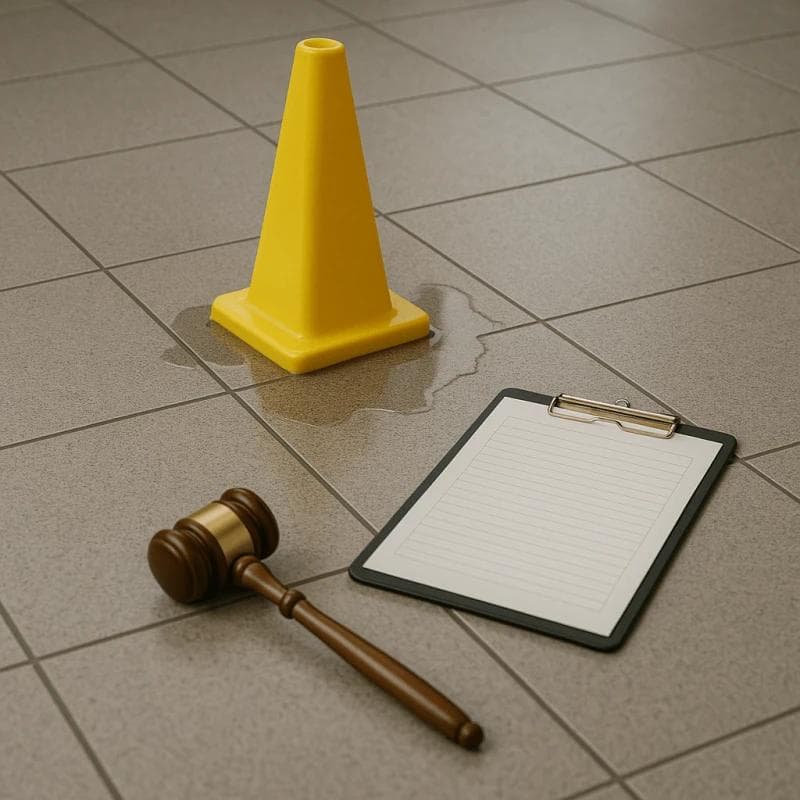Premises Liability vs. Slip-And-Fall: Funding Differences
June 20, 2025

When a grocery shopper snaps an ankle on a wet aisle, most people label it a slip-and-fall. Yet premises liability is the wider umbrella: it covers falling merchandise at a big-box store, a dog unleashed in a common area, scald burns from a faulty apartment heater, even negligent security assaults outside a nightclub. From a legal-funding standpoint, those broader claims look nothing like classic banana-peel accidents. They carry different proof burdens, higher medical costs, and a longer road to settlement—all factors that dictate how much capital we can responsibly advance and when.
Liability clarity: “notice” versus “negligence per se”
Simple slip-and-falls revolve around notice: did the owner know—or should have known—about the spill in time to fix it? That dispute often rests on surveillance timestamps and custodial logs. Broader premises cases may involve strict building-code violations or statutory safety duties. Think of a landlord who ignores smoke-detector ordinances and triggers catastrophic burns. Like the trucking carrier whose hours-of-service breach inflates exposure in truck-accident funding under FMCSA rules, a code violation converts fuzzy negligence into negligence per se, which pumps case value and, consequently, increases the size of a potential advance.

Call For A
Free Consultation
Medical economics: sprains versus skin grafts
Slip-and-fall plaintiffs usually present fractures, ligament tears, and the occasional spinal fusion. Their average specials hover between $25,000 and $75,000. Contrast that with premises burns from exploding food warmers or scalding shower valves, where ICU stays, grafts, and compression-garment therapy can push costs past $1 million—figures mapped in burn-injury costs. Because funding firms peg advance ceilings to expected damages, burn cases qualify for larger draws—often in multiple tranches—while ankle-twist claims merit smaller, single-step advances that match tighter policy limits.
Evidence demands: mops, incident logs, and beyond
Proving a spill existed for “too long” usually hinges on a store’s sweep schedule and a supervisor’s deposition. A negligent-security shooting or fatal dog bite, however, demands police reports, crime-grid analysis, and animal-control histories. Families who mastered meticulous documentation using the nursing-home neglect evidence checklist already know that thorough records accelerate funding approvals and suppress pricing. The same rigor—collecting maintenance tickets, prior-bite complaints, or elevator-inspection certificates—shrinks underwriting uncertainty, letting us release capital faster at lower fees.

Apply For Free To Get The Money You Need Now.
Timelines: “bread-and-butter” cases versus investigative sagas
Insurers label slip-and-falls “bread-and-butter claims”—most resolve within eight to fourteen months. The broader premises universe stretches longer. Dog-bite litigation runs 18–24 months, a rhythm charted in the dog-bite settlement timeline guide. Negligent-security shootings can last three years while criminal trials finish. The pre settlement funding funding lesson is simple: the longer the arc, the more sense it makes to borrow in stages, matching draws to each litigation milestone—incident reconstruction, expert disclosures, and mediation.

Get The Money You Need Now With Legal Funding. Apply Today
Policy-limit ceilings and statutory caps
Slip-and-fall venues—think grocery chains—typically carry $1 million commercial general-liability limits. Complex premises defendants (amusement parks, apartment REITs) often stack umbrella layers worth tens of millions. But statutory caps lurk. Some states impose vertical limits on non-economic damages across all torts, mirroring the malpractice ceilings cataloged in our medical-malpractice funding FAQ. If a cap slices pain-and-suffering recovery to $350,000, an advance must shrink as well, even when lifetime care projections top seven figures.
Borrowing logic: different claims, different cash curves
Slip-and-fall advances
- Smaller, one-time draws—often $3k – $10k—to cover rent or conservative therapy co-pays.
- Quick turnaround because medical records are short and liability discovery straightforward.
- Repayment expected within two years, so simple-interest fees stay modest.
Broader premises advances
- Tiered lending: a first tranche for immediate medical deductibles, a second post-surgery, and a trial-contingency cushion similar to appellate reserves employed in wrongful-imprisonment cases.
- Larger aggregate limits—$25k – $100k—because surgeries, PTSD counseling, and vocational retraining dwarf sprain treatments.
- Longer accrual windows; disciplined budgeting is critical to prevent fee creep.
Appeals: the hidden tail
High-dollar premises verdicts trigger appeals, especially when punitive damages punish corporate indifference. We lift strategies from exoneree appeals financing—described in wrongful-imprisonment loan structures—to craft “verdict cushions.” These low-interest layers preserve plaintiffs’ solvency during 12–18 months of briefing and keep pressure on defendants who hope financial fatigue will discount judgments.
Responsible borrowing: five cross-claim rules
- Borrow only for essentials. Whether ankle fracture or life-altering burn, advances exist to replace lost income and pay medically necessary costs.
- Borrow in sync with treatment milestones. An MRI bill now; reconstructive surgery later. Staggered draws lower fees.
- Audit policy limits and caps early. No amount of evidence beats a statutory ceiling; align expectations and loan size accordingly.
- Track every expense. Receipts feed economic damages, insulating them from caps.
- Stay transparent with counsel. Underwriters verify status through attorneys; surprise liens stall future funding.
Bridging claims into compensation
Premises law may trace every injury to a patch of land, but claim economics vary wildly. A misplaced “Caution: Wet Floor” cone can cost a retailer $40,000; a boiler-room explosion can bankrupt a property owner. For slip-and-fall victims, modest advances relieve short-term pressure and let adjusters inch from $8,000 to $20,000. For the broader negligence spectrum—dog attacks, scald burns, collapsing balconies—structured funding covers months of rehab, expert fees, and mortgage payments, ensuring plaintiffs never trade away millions just to keep the lights on.
Different facts, different injuries, and different statutes mean funding must flex. When it does, plaintiffs—whether they limp for a month or rebuild a life—walk into mediation armed with financial breathing room and the patience to wait for full value.

Apply Now For Free To
Get The Money You Need.
Presettlement Legal Funding.
Never settle for less. See how we can get you the funds you need today.
Apply Now
